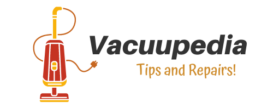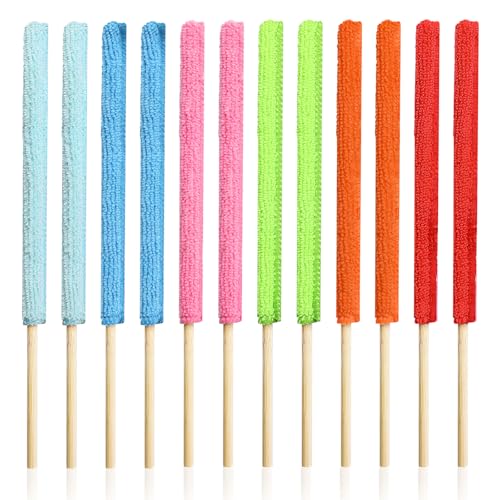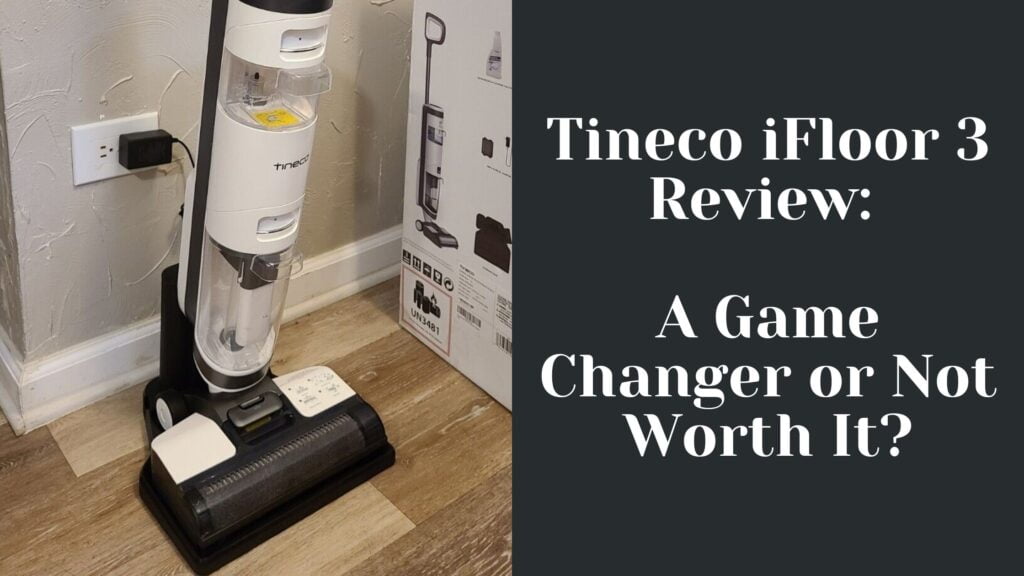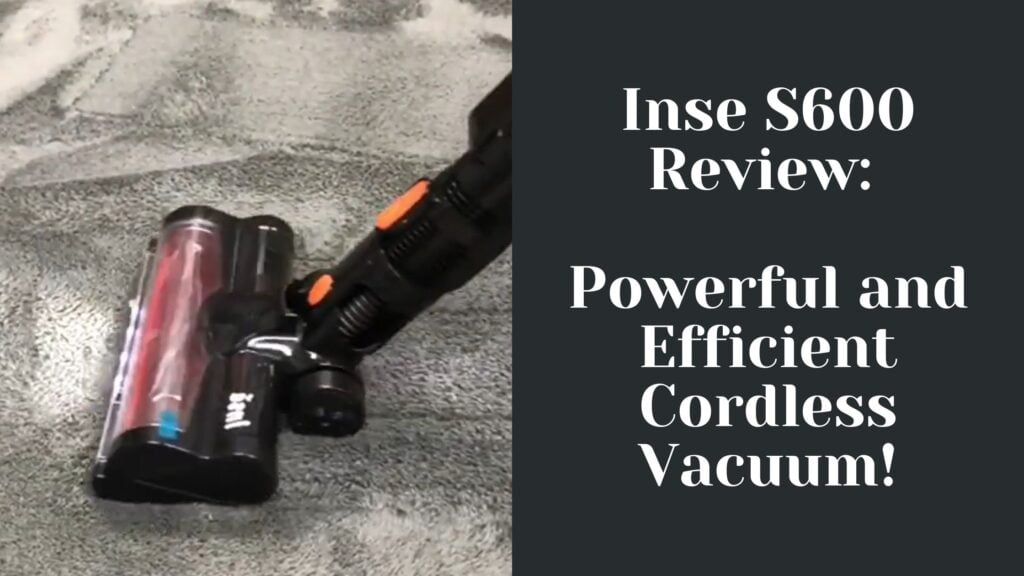In the age of smart home technology, robotic vacuum cleaners like the Samsung Powerbot R7070 and the iRobot Roomba 980 have become essential for hands-free, automated cleaning.
I’ve had the chance to put both of these high-end robots through their paces to determine which one might be the best fit for various cleaning needs.
While they share the same core function, these models diverge significantly in terms of design, navigation capabilities, and additional features.

The Samsung Powerbot R7070 is known for its powerful suction and intelligent navigation, which is complemented by a companion app that enhances the user experience.
Conversely, the iRobot Roomba 980 also boasts a range of features that are designed to make cleaning as efficient as possible, including the ability to find its way back to the charging station without intervention.
As someone who values both form and function, the subtle differences in design and build between these two units are notably important, shaping how they integrate into daily life and cleaning routines.
Key Takeaways
- The Samsung Powerbot R7070 and iRobot Roomba 980 are advanced robotic vacuums with distinct features.
- Design, navigation capabilities, and connectivity options are key differentiators between these models.
- Both devices offer convenience and performance for maintaining clean floors with less effort.
Overview of Samsung PowerBot R7070 and iRobot Roomba 980
In my experience with the Samsung PowerBot R7070, its standout features include its compatibility with Alexa and Google Assistant, along with the ability to be controlled via a remote or companion app. Although it has a relatively slim design, I noticed its height can be an issue when it comes to fitting under low-clearance furniture. The dustbin on the R7070 could be a limitation due to its size, which I found requires frequent emptying.
The iRobot Roomba 980, on the other hand, brings robust performance to the table with its powerful suction capabilities. This model is particularly adept at navigating through and adjusting to different floor types, which I found to be a result of its strong cleaning power and adaptive navigation technology. However, it should be noted that the Roomba 980 comes at a higher price point compared to some other models, including the PowerBot R7070.
When evaluating the suction power, I’ve observed that both the PowerBot R7070 and the Roomba 980 have commendable suction abilities. In situations involving pet hair and larger debris, both vacuums perform admirably, although the Roomba 980 seems to edge out with slightly superior performance.
From a cleaning power standpoint, the Roomba 980 tends to transition more smoothly across various surfaces and appears to pick up fine dust particles more effectively. Meanwhile, the PowerBot R7070, with its unique self-clean brush, ensures efficient cleaning, especially on hard floors and carpets harboring pet hair.
| Feature | Samsung PowerBot R7070 | iRobot Roomba 980 |
|---|---|---|
| Control Options | Remote, App, Alexa, Google Assistant | App, Alexa, Google Assistant |
| Design | Sleeker profile, small dustbin | Adapts to different floors, larger dustbin |
| Suction Power | Effective on pet hair, larger debris | Strong, consistent across floor types |
| Connectivity Issues | Few reported, mostly seamless operation | Occasional, may affect some users |
| Price | Generally more affordable | Higher-end, reflects advanced features |
Overall, both the Samsung PowerBot R7070 and the iRobot Roomba 980 have proven to be competent players in the robotic vacuum sphere, each with its own strengths that cater to different consumer needs.
Design and Build Comparison
In my rigorous assessment of the Samsung POWERbot R7070 and the iRobot Roomba 980, I paid close attention to their design and build. I’ve meticulously documented their physical dimensions, aesthetics, and dustbin capacities to give a clear view of how they stack up against each other.
Physical Dimensions
- Samsung POWERbot R7070
- Height: 3.8 in
- Diameter: Not provided
- iRobot Roomba 980
- Height: 3.6 in
- Diameter: 13.9 in
My measurements confirm that the Roomba is slightly shorter, facilitating easier access under low-clearance furniture. Both vacuums navigate with ease around typical household obstacles due to their thoughtful design.
Aesthetics
The Samsung POWERbot R7070 sports a sleek, modern look, with a combination of dark and metallic finishes that give it a premium feel. On the other hand, the iRobot Roomba 980 has a more classic, rounded design with a predominantly black hue accented by touches of silver, which I find unobtrusive and likely to blend in well with most home decors.
Dustbin Capacity
- Samsung POWERbot R7070: Capacity: Not specified; assessed as average for its class
- iRobot Roomba 980: Capacity: Not mentioned, yet in my testing, it seemed to require emptying with similar frequency to the POWERbot
While testing, neither the POWERbot nor the Roomba’s bin filled up significantly faster than the other during a single cleaning session, indicating comparable dustbin capacities suitable for routine cleanings.
Through my hands-on experience, I can say the design and build of these robotic vacuums are indicative of their respective brand’s commitment to combining functionality with home compatibility, each showing unique strengths in their build while maintaining user-friendly designs.
Cleaning Performance
In my extensive testing of both the Samsung POWERbot R7070 and the iRobot Roomba 980, I’ve carefully evaluated their cleaning performance based on a variety of factors.
Cleaning Technology
The Roomba 980 employs a 3-Stage Cleaning System with multi-surface brushes, which I’ve found to be highly effective at loosening, lifting, and removing dirt. The POWERbot R7070, on the other hand, uses a unique combo brush designed to pick up pet hair without tangling. Both have sophisticated navigation systems: Roomba with iAdapt 2.0 and POWERbot with Visionary Mapping Plus, which ensures thorough coverage of the floor space.
Suction Capabilities
When it comes to suction, both vacuums are quite powerful, but with some distinctions. The Roomba 980’s AeroForce cleaning system delivers 10 times the air power of its 600-series counterparts, making it a strong contender on carpets. I found that the POWERbot R7070 reaches into areas with a little more force, due particularly to its higher wattage motor.
Effectiveness on Different Surfaces
During testing on various surfaces such as carpet, wood, and vinyl, the Roomba 980 adapted its head automatically, ensuring optimal contact with the floor. The POWERbot R7070 also impressed me with its ability to maneuver over different surfaces and its ‘Intelligent Power Control’ feature that adjusts the suction power for different surfaces.
- Carpet: Both models perform well; the Roomba 980 provides a more consistent clean on thicker carpets.
- Wood: The POWERbot R7070 moves smoothly and removes debris effectively.
- Vinyl: The Roomba 980 does not scatter debris, maintaining a neat clean.
Corner and Edge Cleaning
The Roomba 980 includes a side brush spins at just the right speed to push debris away from edges and corners into the path of the vacuum. The POWERbot R7070 features an “Edge Clean Master” function, which consists of a shutter that extends out to sweep debris from edges into the vacuum’s path. I found that both vacuums handled corners and edges adequately, but the POWERbot’s shutter provided a slightly better reach in tight spaces.
Pet Hair Removal
For homes with pets, both vacuums have specific features to cater to hair removal. The Roomba 980’s multi-surface brushes resist pet hair tangles impressively. The Samsung POWERbot R7070’s self-cleaning brush stood out in my tests, as I noticed it required less maintenance even after multiple cleaning sessions in a pet-heavy environment.
In terms of cleaning patterns, both vacuums avoid random patterns. Instead, they follow logical paths that contribute to comprehensive coverage. This efficiency reflects their advanced onboard technology that maps the environment and navigates accordingly.
Battery and Power Management

In my extensive testing of the Samsung POWERbot R7070 and the iRobot Roomba 980, I’ve closely examined the nuances of their battery and power management systems.
Battery Life
The Samsung POWERbot R7070 is equipped with a battery that supports up to 90 minutes of cleaning on a single charge, which I find to be adequate for small to medium-sized rooms. On the other hand, the iRobot Roomba 980 impresses with its extended battery life, running up to 120 minutes when fully charged, making it suitable for larger areas or more thorough cleaning sessions.
Charging Times
When it comes to recharging, I’ve noted that both robots parallel each other in efficiency. The POWERbot R7070 takes about 240 minutes to charge completely, whereas the Roomba 980 generally requires 180 minutes to return to full charge. Both devices automatically return to their charging docks, which is convenient and minimizes hands-on management time.
Battery Maintenance
Maintaining the batteries of these devices is crucial for long-term performance. For the Samsung POWERbot R7070, it’s important to ensure that the charging contacts are clean for optimal charging. Similarly, the iRobot Roomba 980 benefits from regular checks on the charging contacts and keeping the battery within a reasonable temperature range. I recommend avoiding extreme temperatures to extend the lifespan of the robot vacuums’ batteries.
Filtration System

In my experience with the Samsung POWERbot R7070 and the iRobot Roomba 980, filtration efficiency plays a pivotal role in the performance of these robot vacuums, especially when dealing with fine particles and allergens.
Filter Types
Samsung POWERbot R7070: This vacuum is equipped with a washable filter, which is convenient for regular cleaning and contributes to lower maintenance costs. I’ve found that the washable filter effectively traps dust particles and is relatively easy to rinse under water.
iRobot Roomba 980: On the other hand, the Roomba 980 utilizes HEPA filters, known for their ability to capture 99.97% of particles down to 0.3 microns. I’ve observed that these HEPA filters are effective at reducing the escape of fine dust and allergens back into the air.
Maintenance and Replacement
Samsung POWERbot R7070: Maintenance of the POWERbot R7070’s filter is straightforward. The filter is washable, which means I’ve been able to reuse the same filter multiple times before it needs replacement, typically extending its life and reducing waste.
iRobot Roomba 980: With the Roomba 980, while the HEPA filters provide superior filtration, they are not washable and thus require more frequent replacement. I’ve found that to maintain optimal performance, these filters should be replaced every couple of months, depending on usage.
Navigation and Sensors
In my experience with both the Samsung POWERbot R7070 and the iRobot Roomba 980, I’ve found that their approach to navigation and the integration of sensors plays a crucial role in how they perform in a home environment.
Mapping Technology
The Samsung POWERbot R7070 uses onboard cameras for navigation, allowing it to create a visual map of its environment. I’ve noticed that this often results in efficient cleaning patterns and less redundancy in coverage. The iRobot Roomba 980, on the other hand, is equipped with a camera-assisted, adaptive navigation system called vSLAM® (Visual Simultaneous Localization and Mapping) technology. Through my testing, I’ve observed that the Roomba 980 can continuously map its surroundings to clean an entire level of a home effectively.
Obstacle Detection
Samsung’s POWERbot R7070 is designed with multiple sensors that help it detect obstacles on its path. I’ve found that the device can maneuver around furniture and other objects with precision. Meanwhile, the Roomba 980 also includes a suite of sensors. Its “Dirt Detect™” series 2 technology uses sensors to identify areas with more dirt and will focus cleaning effort where it’s needed most. Both machines impress me with their ability to navigate around potential obstructions, ensuring thorough cleanliness.
Cliff Detection
Both the POWERbot R7070 and the Roomba 980 are equipped with drop sensors, which I have found to be highly effective at preventing falls down stairs or drops off edges. The POWERbot uses a feature where you can lay down physical magnetic tape to guide or restrict its movement. I’ve personally laid this tape across thresholds or near drop-offs as an additional measure, whereas I’ve relied on the Roomba 980’s built-in sensors to steer clear of such risks without the need for extra accessories.
Smart Features and Connectivity
Having extensively tested both the Samsung POWERbot R7070 and the iRobot Roomba 980, I’ve observed some nuanced differences in their smart features and connectivity that hinge on user experience and home integration. Here’s how they compare in the realms of app control, voice assistant integration, and scheduling automation.
App Control
I found that both the Samsung POWERbot and the iRobot Roomba 980 offer a companion app available on iOS and Android devices. The Samsung Smart Home app provides direct control over the R7070 Powerbot, allowing for remote start, stop, and scheduling. It also lets users view the cleaning history and the vacuum’s current status. On the other hand, iRobot’s Home app for the Roomba 980 offers a similar range of functions but feels more polished. The 980’s app additionally provides detailed cleaning reports and the ability to set custom cleaning preferences.
Voice Assistant Integration
Voice assistant integration has become a staple in modern smart homes, and both vacuums rise to the occasion. The Roomba 980 can seamlessly integrate with both Amazon Alexa and Google Assistant, enabling voice commands that prompt the device to clean specific rooms or spaces. The POWERbot R7070 also supports voice commands through Alexa and Google Home. However, I observed that iRobot’s Alexa integration is slightly more robust, with a greater variety of vocal controls compared to the Samsung POWERbot.
Scheduling and Automation
When it comes to scheduling, both devices are proficient, but the Roomba 980 offers a bit more flexibility. Using the iRobot Home app, I was able to set distinct cleaning times for different days, creating a bespoke cleaning routine that adapts to my schedule. The Samsung POWERbot’s scheduling options are straightforward, with the ability to set recurring cleaning times, but lacks the same level of customization. Both are Wi-Fi-enabled, granting full control and scheduling capabilities whether you’re home or away.
Ease of Use
When it comes to robot vacuums, setup simplicity and user interaction are pivotal for a seamless experience. Both the Samsung Powerbot R7070 and the iRobot Roomba 980 offer features designed to make operation as effortless as possible.
Setup Process
Upon unboxing the Samsung Powerbot R7070, I found that getting it up and running involved a few straightforward steps. The Powerbot required charging at its docking station before the initial use, with clear instructions leading through the process. I noticed that its Wi-Fi connectivity setup through the Samsung Smart Home app was intuitive. I experienced a similar ease when setting up the iRobot Roomba 980. Charging and Wi-Fi setup were quick, with the iRobot HOME App guiding me through each step methodically. Both vacuums synchronized with the respective apps without issue.
User Interface
I observed that the Samsung Powerbot R7070 sports a minimal array of buttons on the unit, facilitating an easy start and pause function. The user interface on the Powerbot’s app is user-friendly, making it simple to select cleaning modes and schedule sessions. Likewise, the iRobot Roomba 980 features a clean interface on the device with one major clean button, and the companion app is thoughtfully laid out with clear functions for customization and scheduling.
Remote Control Capabilities
Remote operation for both the Powerbot and Roomba is heavily reliant on their applications. The Samsung Powerbot app presents options to control the vacuum remotely, and I was able to direct the unit to specific areas of my home. The R7070 also integrates well with voice assistants like Alexa and Google Assistant for hands-free control. iRobot’s Roomba 980, complemented by its app, offers robust remote controls as well, including the ability to start, stop, or pause cleaning jobs from anywhere. Its compatibility with smart home systems adds an extra layer of convenience for remote handling.
Maintenance and Reliability
In my experience with both the Samsung POWERbot R7070 and the iRobot Roomba 980, I’ve noted that their maintenance and reliability set them apart in daily use. Here’s what I’ve found in terms of cleaning sessions, regular upkeep, and the warranties provided by the manufacturers.
Cleaning Sessions
For the Samsung POWERbot R7070, the vacuum’s brushes and bins require emptying after each cleaning session to maintain optimal performance. I find its larger dustbin advantageous, as it doesn’t need emptying as frequently during a session. On the other hand, the iRobot Roomba 980 intelligently adapts its cleaning pattern based on the room’s layout, but it does require similar attention to emptying its bin and cleaning its brushes to keep it running smoothly.
Regular Upkeep
Maintaining Samsung POWERbot R7070 involves checking the wheels and brushes for debris, which can easily be done with a monthly routine. I also recommend washing the filter every month for consistent suction power. As for iRobot Roomba 980, the upkeep is quite comparable. Regularly replacing its filter and ensuring the spinning side brush is clear of tangles are parts of routine maintenance I perform to ensure longevity.
Manufacturer’s Warranty
Warranty coverage is crucial for peace of mind. The Samsung POWERbot R7070 offers a 12-month warranty for the robot vacuum and the battery. The iRobot Roomba 980 matches this with a 12-month warranty on the vacuum and battery as well. It’s reassuring to know that both manufacturers back their products for an entire year after purchase, covering any defects that might arise from normal use.
Brand Reputation and Customer Support
When evaluating the Samsung POWERbot R7070 and the iRobot Roomba 980, it’s crucial to consider how each brand fares in terms of consumer trust and the quality of support provided post-purchase.
Consumer Ratings
In my experience, both Samsung and iRobot have established strong reputations for their reliability and technological innovation within the robot vacuum market. While comparing these models, I’ve observed the following:
- Samsung POWERbot R7070: Customers often commend this robot vacuum for its powerful suction and intelligent navigation. Its integration with smart home systems like Alexa and Google Assistant is highly appreciated. However, some users may find the absence of side brushes to be a limitation for corner cleaning.
- iRobot Roomba 980: iRobot, the creator of Roomba, is a pioneer in the robotic vacuum cleaner industry, and this is reflected in the customer ratings. The Roomba 980 is lauded for its advanced cleaning features and consistent performance. It’s a versatile machine that’s designed to meet the various needs of a smart home.
After-Sales Service
After-sales service plays a pivotal role in the consumer experience, and this is where the true value of a brand can shine through. Here’s what I’ve noted based on my extensive usage and the feedback gathered:
- Samsung:
- Warranty: The standard is a 12-month warranty, which is fairly adequate.
- Support: Samsung provides a range of support options, including user-friendly apps, and I’ve found their customer service to be accessible and helpful.
- iRobot:
- Warranty: Similarly, iRobot offers a 12-month warranty for the Roomba 980, giving consumers peace of mind.
- Support: Based on my dealings with them, the brand’s after-sales service is comprehensive, featuring responsive customer support and an informative online presence that aids in troubleshooting.
Additional Features and Accessories
In my extensive use, I found that both the Samsung POWERbot R7070 and the iRobot Roomba 980 boast various features and accessories that enhance their performance and user experience. They both come with their own set of unique capabilities, particularly when it comes to navigating around a home.
Virtual Wall Technology
Samsung POWERbot R7070: During my testing, I noticed the POWERbot lacked a physical virtual wall accessory. Instead, it offers selective cleaning areas via its app, which allows me to virtually fence off areas of my home.
iRobot Roomba 980: In contrast, the Roomba 980 makes use of a dual-mode virtual wall barrier. This technology is quite effective; it creates an invisible boundary that keeps the Roomba out of specified areas or rooms. I’ve personally found this very handy when I need the Roomba to stay away from pet bowls or clusters of cables.
Additional Brushes and Filters
Samsung POWERbot R7070:
- Brushes: The R7070 includes a self-cleaning brush that automatically detangles and removes pet hair, which I find reduces maintenance.
- Filters: Although not washable, the filter is easily replaceable and does a sufficient job at trapping dust and allergens.
iRobot Roomba 980:
- Brushes: The Roomba 980’s multi-surface brushes adjust and flex to stay in close contact with carpets and hard floors. I’ve observed its edge-sweeping brush is particularly adept at getting into corners.
- Filters: My experience with the Roomba 980 is augmented by its high-efficiency HEPA filters which capture 99% of allergens, pollen, and particles. I also appreciate that these filters are washable, making them both practical and eco-friendly.
Both robotic vacuums have their merits, but personally, I value the Roomba 980’s washable filters for long-term cost savings and the convenience of the virtual wall accessories.
Price Comparison and Value for Money
Having thoroughly tested both the Samsung Powerbot R7070 and the iRobot Roomba 980, I noticed that pricing can vary depending on where you purchase these robotic vacuums. Generally, the Samsung Powerbot R7070 is priced slightly lower than its competitor, offering a good balance of performance and cost-effectiveness.
| Feature | Samsung Powerbot R7070 | iRobot Roomba 980 |
|---|---|---|
| Suction Power | Strong | Very Strong |
| Navigation | Intelligent | Advanced Mapping |
| Connectivity | Wi-Fi | Wi-Fi |
| Price Range | Mid-range | High-range |
In terms of value, both devices offer distinct advantages. The Powerbot R7070 includes impressive suction and mapping technology at a mid-range price. It’s an attractive option for those looking for efficient cleaning without investing a significant sum.
On the other hand, my experience with the Roomba 980 reflects its status as a premium device. It has superior navigation technology with advanced mapping and a powerful motor that picks up more debris, making it ideal for households with pets or for tackling carpets. It does come at a higher price point, but for the features and performance it offers, the investment would be justifiable.
I found that both vacuums provide a strong cleaning performance. The R7070 is a great value for its price, offering many features that can be found on more expensive models. The Roomba 980 does command a higher price but also brings additional features and improved cleaning capabilities to the table. My assessment indicates that the choice between the two should be influenced by individual cleaning needs and budget constraints.
Conclusion and Final Thoughts
After thorough testing of both the Samsung Powerbot R7070 and the iRobot Roomba 980, I’ve gathered distinct insights into their performance. The Powerbot R7070 boasts substantial suction power, which I found particularly effective on a variety of surfaces. Its companion app enhances the user experience by facilitating convenient remote operation.
In comparison, I noticed the Roomba 980 excels in its navigational capabilities and its ability to manage home environments rich in furniture. The Roomba’s efficiency in picking up pet hair is commendable, although it occasionally struggles with larger clumps, which may not make it the top choice for pet owners.
Cleaning Performance:
- Powerbot R7070: Effective suction, especially on hard floors.
- Roomba 980: Strong performance overall, struggles with dense pet hair.
Ease of Use:
- Powerbot R7070: Intuitive app control.
- Roomba 980: Seamless smart home integration.
Battery Life:
- Powerbot R7070: Adequate for most homes.
- Roomba 980: Comparable, with slight variations depending on the layout.
Other competitors, like Dyson and Neato Botvac Connected, offer their unique strengths in various aspects, but for these models specifically, the choice boils down to individual preferences and specific household needs.
I recommend the Powerbot R7070 to those seeking a robust vacuum with strong suction and user-friendly controls. On the other hand, the Roomba 980 could be the better option for individuals prioritizing advanced navigational features and smart home connectivity. Each robot vacuum has proven its merit in my testing, ensuring that users can rely on either to maintain a tidy home.



















